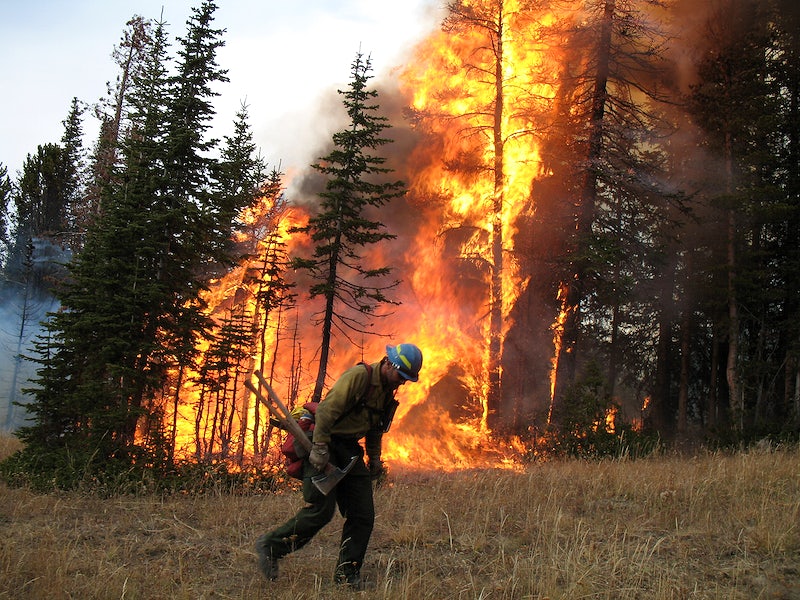In April, an ice storm caused severe destruction in Ontario and Quebec, resulting in fatalities and large-scale disruption of power supply. As the month of May set in, temperatures got warmer, and untamable forest fires hit several Canadian provinces, including British Columbia, Alberta, Saskatchewan, Manitoba, and Nova Scotia.
By May 9, temperatures over 30 degrees Celsius were forecast for the northern and central regions of British Columbia, increasing the risk for further wildfires. High temperatures also resulted in faster snow-melting and a rise in river levels. Flood warnings and advisories were issued in several parts of the province. Highway closures and evacuations were reported following floods in the central and southern regions. Subsequently, heavy rains made the flood-like situation worse; however, they provided respite from the fires.
The situation in Alberta was much more severe. On May 6, a state of emergency was declared across the province after at least 110 wildfires displaced over 24,000 people. Firefighters from across Canada and, additionally, from the US were deployed to extinguish the ceaseless fires. The smoke emitted affected parts of western Canada and northern US. Many suffered from breathing problems and other lung conditions. By May 24, cooler temperatures were recorded, at least 7,000 people remained evacuated from their homes, and around 65 fires continued to burn. As of May 30, Environment Canada had issued poor air quality and low visibility warnings.

On May 24, officials in Manitoba restricted vehicular movement in the southeastern parts of the province. At least 7,500 people were evacuated from the Cross Lake area. Wildfire danger in the central and eastern parts of Manitoba was high to extreme, while it remained low to moderate across most of the northern parts of the province.
On May 15, at least 35 active wildfires were reported in several northern areas of Saskatchewan. Smoke from the burning fires also affected the central and southern parts of the province. The Air Quality Index hit a 10, posing a very high risk, unusual for Saskatchewan. Visibility was as low as 400–500 meters. Environment Canada advised residents to limit outdoor activities.
On May 28, a local state of emergency was declared in Halifax, Nova Scotia. The order was to remain in effect for at least seven days. Active fires were reported near the Tantallon and Barrington Lake areas. At least 16,000 people were evacuated from nearby communities, and severe property destruction was reported. Highways in the area were closed. Power supply and telecommunications companies announced suspension of services in the affected areas. Environment Canada issued alerts for poor air quality and low visibility across the city due to the smoke. As of May 30, evacuations continued as new wildfires were reported.
On May 30, Environment Canada issued heat warnings for parts of Ontario and Quebec. High temperatures could persist until at least June 2. Increased temperatures and dry conditions may pose a risk of wildfires in these regions.
Due to the unpredictable weather conditions, experts are unable to predict when Canada will experience relief from the raging wildfires.
SITATA is constantly monitoring the situation and providing regular updates. Download the app to stay informed of any potential risks from the fires that may disrupt your travel.



